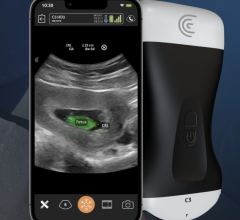
January 11, 2016 — The American College of Radiology (ACR) and the Society of Breast Imaging (SBI) have released a statement against the final breast cancer screening recommendations released yesterday by the U.S. Preventive Services Task Force (USPSTF). According to both organizations, if followed, the recommendations will result in thousands of unnecessary deaths each year, and thousands more women enduring extensive and expensive treatment than if their cancer had been found early by an annual mammogram.
Currently, the Affordable Care Act (ACA) requires private insurers to cover exams or procedures given a grade of “A” or “B” by the USPSTF with no copay. Medicare determines coverage separately. The task force gave routine screening of women ages 40-49 a grade of “C” and gave a “B” grade only to biennial screening for women 50-74. Therefore, women 40-49 who want to get a mammogram and those 50-74 who prefer annual screening may not be guaranteed coverage under the ACA if these USPSTF recommendations were recognized as policy. However, with the inclusion of primary language from the Protecting Access to Lifesaving Screenings Act (PALS Act) in the recently enacted Consolidated Appropriations Act, mandatory mammography insurance coverage for millions of women nationwide will continue for at least two more years.
The ACR and SBI continue to recommend that women get yearly mammograms starting at age 40. New American Cancer Society (ACS) breast cancer screening guidelines, and previous data used by the USPSTF to create its recommendations, state that annual screening in women 40-and-older saves thousands more lives each year than screening at a later age and/or less frequent screening.
“Following these USPSTF recommendations would result in lethal consequences for thousands of women each year. A recent study in the British Medical Journal confirms that early detection of breast cancer via mammography is critical for improving breast cancer survival, regardless of therapy advances. Moving away from yearly screening in women 40-and-older endangers women, would cause needless death and disfigurement of women, and would simply not be good breast cancer screening policy,” said Debra Monticciolo, M.D., FACR, chair of the American College of Radiology Breast Imaging Commission.
To ensure access to mammography, Congress delayed for two years any changes to insurance coverage based on these recommendations, while breast cancer experts vet the recommendations and the process by which they were created.
“This congressionally mandated delay will help providers continue to save tens of thousands of lives each year while the USPSTF recommendations and their creation process are vetted by breast cancer screening experts and lawmakers. Women and Congress need to remain vigilant so that coverage decisions based on these recommendations are not simply put into place by insurers when that is not the intent of the Task Force recommendation,” said William T. Thorwarth, Jr., M.D., FACR, chief executive officer of the American College of Radiology.
“Women should have the opportunity to make informed screening choices and have insurance coverage for those decisions. The USPSTF’s recommendations may still jeopardize women’s access to these lifesaving exams. We are grateful for Congress’s foresight to include legislative language from the PALS Act in the Consolidated Appropriations Act. Clearly, they agree that women ages 40-49, 50-74, and 75-and-older who want annual mammograms, should be covered for, and have access to, these lifesaving exams. Women and their families should continue to make sure that their lawmakers safeguard that access,” said Elizabeth Morris, MD, FACR, president, Society of Breast Imaging.
The task force process resulting in these recommendations does not comply with Institute of Medicine (IOM) guideline development recommendations, according to the ACR, which are widely regarded as the medical standard. The task force did not include breast cancer imaging or treatment experts on its panel. By IOM standards, these USPSTF guidelines, which appear to be the result of a limited review of only selected studies that underestimate the lifesaving benefit of mammography screening, may not be considered trustworthy, said both organizations.
The largest (Hellquist et al) and longest running (Tabár et al) breast cancer screening studies in history reconfirm that regular screening cut breast cancer deaths by roughly a third in all women ages 40-and-over — including those 40-49 – and disprove the lower USPSTF estimates. According to the National Cancer Institute, since mammography screening became widespread in the mid-1980s, the U.S. breast cancer death rate, unchanged for the previous 50 years, has dropped 36 percent.
The joint statement notes that the task force cites “overdiagnosis” as a basis for its recommendations, but the ACS confirms that overdiagnosis claims are vastly inflated due to key methodological flaws in many studies. “Overdiagnosis” is likely only one to ten percent and is largely due to inclusion of ductal carcinoma in situ (DCIS). Few, if any, invasive cancers are over-diagnosed. Physicians cannot predict which screening findings may lead to “overdiagnosis” because medical science cannot determine which cancers will advance. Most understandably recommend treatment.
The USPSTF also uses short-term anxiety resulting from mammography results to justify its recommendations. However, these feelings, while normal, rapidly go away with no lasting effects to women’s health. Past research indicates that nearly all those who experienced a false-positive support screening. Short-term anxiety from test results and the comparatively small number of mammography false positives do not outweigh the thousands of lives saved each year by mammography.
For more information: www.acr.org, www.sbi-online.org


 July 25, 2024
July 25, 2024 








